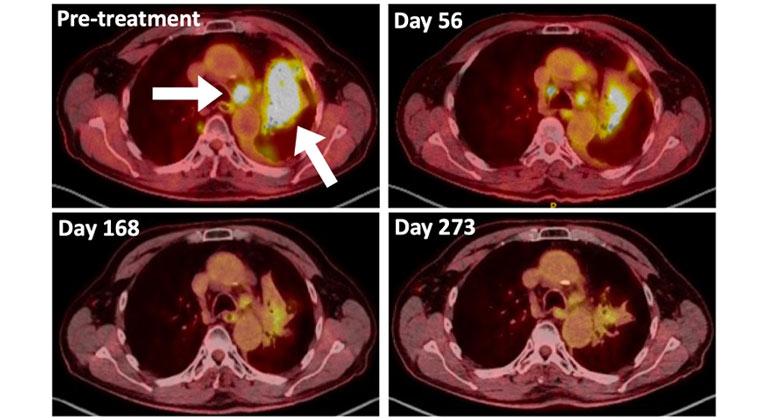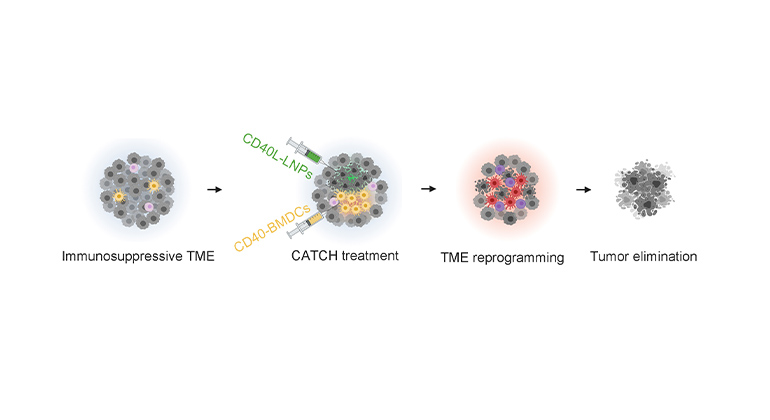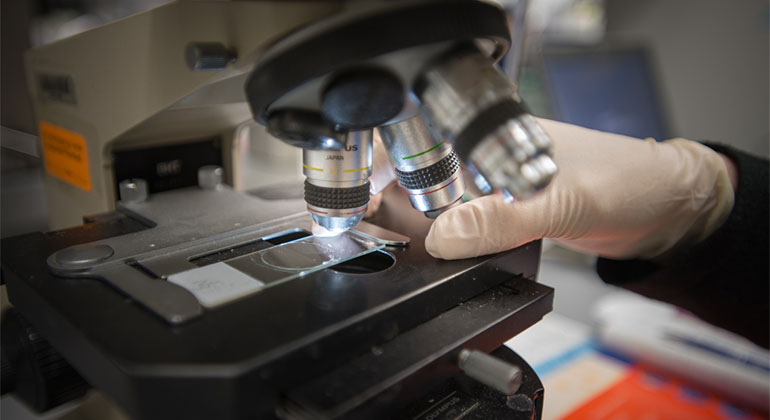Mount Sinai Researchers Identify Mechanisms and Potential Biomarkers of Tumor Cell Dormancy
May be able to recreate conditions that keep cancer cells from growing after they have spread.
Oncologists have long puzzled over the fact that after cancer treatment, single cancer cells that are dispersed throughout the body – so-called disseminated tumor cells – are quick to grow and form secondary tumors called metastases in certain organs, while in other organs they metastasize more slowly, sometimes decades later. Such is the case with head and neck squamous cell carcinoma (HNSCC) cells, which remain dormant when lodged in bone marrow but rapidly form tumors when they make their way into the lungs.
A study published online October 27 by Nature Cell Biology by Bragado et al. reveals that bone marrow contains high levels of TGFβ2, which activates the tumor suppressor gene p38 in tumor cells and triggers a cascade of events that renders tumor cells dormant and keeps HNSCC growth in check. In the lungs, where TGFβ2 is in short supply, these cells rapidly form tumors.
The research team, led by Julio A. Aguirre-Ghiso, PhD, Associate Professor of Medicine, Hematology and Medical Oncology, and Otolaryngology at the Icahn School of Medicine at Mount Sinai, is the first to identify the role of TGFβ2 in determining whether HNSCC cells will remain harmlessly dormant or behave aggressively in a given location. The study confirms a century-old theory called the "seed and soil" theory of metastasis, which suggests that a tumor cell – the seed – either sleeps or thrives within the unique environment of each organ – the soil.
"Our study provides critical evidence to explain why tumor cells gain a firm foothold in certain organs but not in others, where they can remain inactive for long periods of time," explained Dr. Aguirre-Ghiso.
Approximately 80 percent of the animal models the researchers studied contained disseminated HNSCC cells in the lungs, while less than 30 percent contained tumor cells in the bone marrow. After removing the primary tumors, the number of disseminated tumor cells in the bone marrow remained the same for several weeks (equivalent to ~ 3 years in humans). However, the number of tumor cells in the lungs increased shortly after the tumors were removed, suggesting that conditions within each organ had a long-lasting effect on the cells’ behavior.
In addition, the researchers discovered that lowering TGFβ2 or p38 levels awakened dormant cells and fueled metastatic growth throughout the body.
These findings may have implications for estrogen-positive breast tumor cells, which have a similar genetic signature to that of dormant HNSCC cells.
"Our study is the first to identify specific characteristics found in cancer cells as well as in the microenvironment in which they are found that determine whether they will metastasize rapidly, posing a new threat to the patient, or will remain dormant for a period of time," said Dr. Aguirre-Ghiso. "Eventually, we may be able to predict, based on markers detected in disseminated tumor cells and/or in the microenvironment, which patients have a dormant disease and which ones will need more aggressive treatment. This information may also lead to the development of new drugs that mimic the pathways that prevent tumor cells from metastasizing."
About the Mount Sinai Health System
Mount Sinai Health System is one of the largest academic medical systems in the New York metro area, with more than 43,000 employees working across eight hospitals, over 400 outpatient practices, nearly 300 labs, a school of nursing, and a leading school of medicine and graduate education. Mount Sinai advances health for all people, everywhere, by taking on the most complex health care challenges of our time — discovering and applying new scientific learning and knowledge; developing safer, more effective treatments; educating the next generation of medical leaders and innovators; and supporting local communities by delivering high-quality care to all who need it.
Through the integration of its hospitals, labs, and schools, Mount Sinai offers comprehensive health care solutions from birth through geriatrics, leveraging innovative approaches such as artificial intelligence and informatics while keeping patients’ medical and emotional needs at the center of all treatment. The Health System includes approximately 7,300 primary and specialty care physicians; 13 joint-venture outpatient surgery centers throughout the five boroughs of New York City, Westchester, Long Island, and Florida; and more than 30 affiliated community health centers. We are consistently ranked by U.S. News & World Report's Best Hospitals, receiving high "Honor Roll" status, and are highly ranked: No. 1 in Geriatrics and top 20 in Cardiology/Heart Surgery, Diabetes/Endocrinology, Gastroenterology/GI Surgery, Neurology/Neurosurgery, Orthopedics, Pulmonology/Lung Surgery, Rehabilitation, and Urology. New York Eye and Ear Infirmary of Mount Sinai is ranked No. 12 in Ophthalmology. U.S. News & World Report’s “Best Children’s Hospitals” ranks Mount Sinai Kravis Children's Hospital among the country’s best in several pediatric specialties.
For more information, visit https://www.mountsinai.org or find Mount Sinai on Facebook, Twitter and YouTube.

A Type of Allergy Medicine Might Help Treat Lung Cancer, Research Suggests
Dec 06, 2023 View All Press Releases
Diabetes May Accelerate Blood Cancer Growth, Yet Survival Outcomes Differ by Race
Sep 29, 2023 View All Press Releases
Mount Sinai Awarded $3.4 Million to Study Prostate Cancer in People With HIV
Sep 12, 2023 View All Press Releases
New RNA-based Therapy Combats Melanoma in Mouse Models
Jul 27, 2023 View All Press Releases
Study Reveals a Trio of Immune Cells Vital in Response to Liver Cancer Immunotherapy
Jun 15, 2023 View All Press Releases


